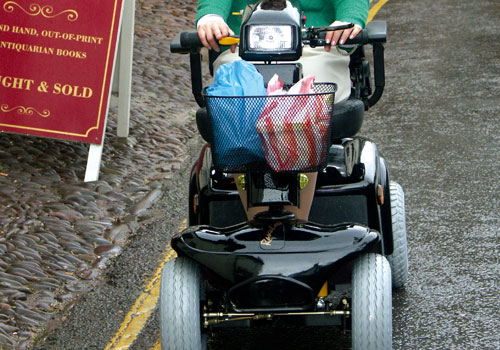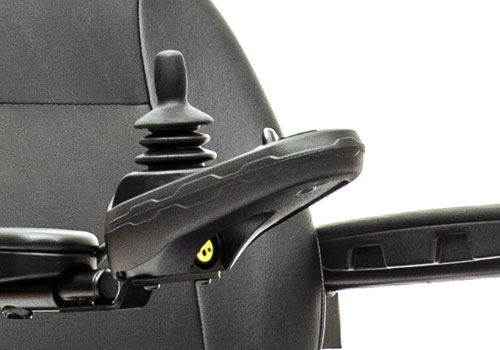Buying a mobility scooter - things to consider
Whatever your reasons for needing one, a mobility scooter is a significant investment. It’s a lifestyle choice as well as a medical device, so you need to make sure you’re getting the type that best fits your requirements. With hundreds on the market, though, the prospect of choosing can be daunting.

The key is to come prepared, knowing exactly what specifications and features to look for. With that in mind, we’ve compiled three of the biggest factors to consider – you can then prioritise based on your own circumstances.
Class and size – Where do you like to travel?
Mobility scooters are divided into two main categories: Class 2 and Class 3. Class 2 scooters are built for pavement use only, and many can be dismantled or folded for easier transportation. You’ll find these are restricted to 4mph, as it’s illegal to travel any faster on pavements.
Class 3 scooters, on the other hand, tend to be larger and a little quicker. With these, the speed limit will be closer to 8mph, which means they can be used on the road too – providing they’re registered with the DVLA and have lights fitted.
If you’re only travelling short distances, and you think you’d benefit from maximum portability, Class 2 is the way to go. If the shops are a little further away, you’ll be more comfortable and time-efficient riding on a Class 3 scooter – although portability is limited, there are transportation options available, so be sure to do some research before buying.

Range – How far do you need to go?
Just like most other four-wheeled vehicles, mobility scooters need power. The majority come equipped with batteries of some kind; the three main types are lead acid, gel cell and AGM , and each has its benefits.
Perhaps the biggest battery consideration, however, is how far yours will take you in a single trip. You’ll find that, due to their purpose, Class 3 scooters tend to have a better range than their Class 2 counterparts. Some will offer maximum travelling distances as far as 35 miles, meaning you have more freedom and won’t need to charge it as often. Pavement-use scooters, on the hand, are usually limited to around 8-10 miles – ideal if you’re doing one short trip per day.

Controls – How comfortable are they?
You’ll find that control layouts also vary from one scooter to the next, and this can affect how comfortable you are while riding. If the acceleration trigger is a little further away, for example, your hands may be stretched when pulling it. It could also prove difficult or inconvenient to operate the brakes if your mobility is limited for whatever reason, and this can be dangerous.
It’s important, therefore, that you test drive any scooters you’re considering. This will allow you to make sure it’s the right fit – the salesperson will also be able to guide you through the controls and address any concerns you may have. They may well recommend a different model if they can see you struggling with something.
These are three of the main things you’ll want to consider when searching for a mobility scooter – there are various other factors to have in mind, including price, features, storage and general comfort . Our advice is to take your time and try as many models as you can; it won’t be long before you discover your perfect ride. Good luck!